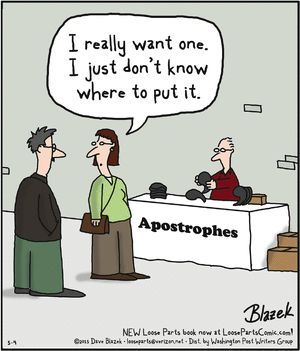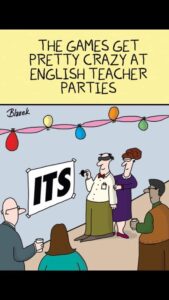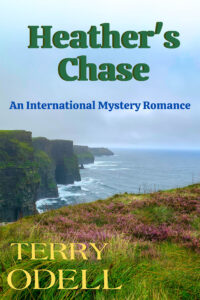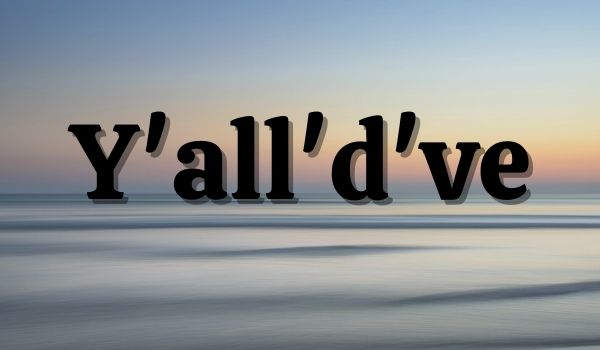Using Apostrophes
Terry Odell
 A pet peeve of mine is incorrect apostrophe usage, something I see all the time while driving around, or scrolling the internet. I’m sure everyone here at TKZ is well aware of the rules, but just in case someone needs a refresher course, I thought I’d mention it. If you’re starting out, or get confused, I hope this helps.
A pet peeve of mine is incorrect apostrophe usage, something I see all the time while driving around, or scrolling the internet. I’m sure everyone here at TKZ is well aware of the rules, but just in case someone needs a refresher course, I thought I’d mention it. If you’re starting out, or get confused, I hope this helps.
Use 1. It shows possession. Something belongs to someone or something.
The man’s hat. The dog’s leash. My biggest trouble-spot with this is dealing with plurals. There’s a difference (as my crit partner loves to point out) between the Detective’s office and the Detectives’ office. But then, I can never remember if I’ve given each of my detectives his own office.
I also have to stop and think about housing. You know, like when you go to the house that belongs to Mr. and Mrs. Smith. Since it belongs to both of them, it’s the Smiths’ house, not the Smith’s house. Our neighbors across the street have a lovely carved sign that says “The Cochran’s.” I cringe every time I walk by.
Words that already end in “s” can be a problem. I go out of my way to avoid naming characters with names ending in “s” to bypass the head-scratching. And here, I’ve seen it both ways. In my first book, my editor, whom I fear was overworked, didn’t catch that I’d written both Doris’ and Doris’s throughout the manuscript. Luckily, I noticed it in edits. She really didn’t care which one I used as long as they were all the same. My inclination is to leave off the final ‘s’ after the apostrophe simply because it looks cumbersome and when I read it “aloud in my head” I keep added “s” sounds.
Okay, that’s one use of the apostrophe. The other:
Apostrophes are used in contractions to show you’ve combined two words and taken away some of the letters.
Examples: Don’t. I’ve. Shouldn’t. He’d. We’ll.
I taught apostrophes when I was tutoring in adult literacy. It was very common for students to see the word don’t and read it aloud as do not. They knew what the apostrophe meant even if they couldn’t use one when writing.
Use 3. THERE IS NO USE THREE
You CANNOT use an apostrophe to create a plural.
 A major hangup for people seems to be with its and it’s. I know it’s very easy to have the fingers outpace the brain, and first-draft typos are common, but if you remember it’s = it is, you’ll be fine. The apostrophe stands for a missing letter.
A major hangup for people seems to be with its and it’s. I know it’s very easy to have the fingers outpace the brain, and first-draft typos are common, but if you remember it’s = it is, you’ll be fine. The apostrophe stands for a missing letter.
Which means its is possessive, which is the exception to Rule 1. The tree lost its leaves. The leaves belonged to the tree.
The only other ‘exception’ I can think of is one I discussed with my editor (not the one who missed my Doris inconsistencies). My characters can mind their Ps and Qs. But when it comes to dotting I’s , she prefers the apostrophe because it avoids the confusion with the word Is. And, for consistency, she included the apostrophe with crossing T’s. So, it’s dotting I’s and crossing T’s. The caps, I think, are a matter of preference.
But PLEASE. Don’t kill any more puppies!
One more hint, related to formatting:
There’s a difference between an apostrophe and a single quotation mark. Trust me.
If you’re using Word, when you want to start a word with an apostrophe because it’s a contraction, abbreviation, as when you’re using dialect, Word assumes that you want a single quote there, because that’s how the program works.
Thus, if your character uses em for them you’re going to get ‘em. What you want is ’em. There are codes, or keystrokes for getting that apostrophe instead of the single quote, but I’m lazy and forgetful, so I just copy an apostrophe from another word and paste it where it needs to be.
To find them, you can search on a space before a single quote/apostrophe, and that should bring them up.
I’m sure you have some apostrophe observations to share. The floor is yours.
 My new Mystery Romance, Heather’s Chase, is now available at most e-book channels. and in print from Amazon.
My new Mystery Romance, Heather’s Chase, is now available at most e-book channels. and in print from Amazon.
Terry Odell is an award-winning author of Mystery and Romantic Suspense, although she prefers to think of them all as “Mysteries with Relationships.” Follow her on Facebook and Twitter.



I’m with you on this one… seems to be an early rule of grammar oft’ o’er look’d…
I was glad to see your pic of “y’all’d’ve” – I mashed together so many contractions that my spell-check has run out of red – “y’all’er”, “y’all’ll” – I’ll have to add this one to my diction’ry… and the folks who put the apostrophe in the wrong place – ya’ll – are just plain Yankees to us’n in the South… ?
I think Southern is a whole different language, George!
Of course as with all hard, fast rules, there are exceptions. https://www.dailywritingtips.com/when-to-form-a-plural-with-an-apostrophe/
In Word, on a PC, you can get that opening apostrophe to covert them to ’em thusly:
Type ctrl +’
Then type ‘
It works for quotation marks at the end of an em dash, too.
Thanks, John. Good to know. I’ll try to remember the shortcut.
As long as you know you need a single quote, not an apostrophe, how you get there is secondary.
Here’s where I’d chime in for Apple Pages, but I fiddled around a while and never found a way to do that. I imagine that’s because it’s not so Draconian about the apostrophe.
Then there are the beginning fantasy writers who give us villains with names such as K’Lenzacx’a.
I thought that was a rule for science fiction and fantasy characters, Mike. Does it make you wonder what letter(s) are missing?
The make-it-look-alien use of apostrophes is common enough in science fiction and fantasy.
My science fiction romance STAR-CROSSED was based on the premise that a human colony lost most of the men to a plague that never went away so it became a matriarchy with the men protected in isolation. After generations, the last name was no longer the father’s, but the mother’s first name with “D'” at the beginning so Jane, daughter of Mary, would be Jane D’Mary.
My true crime editor told me an apostrophe “S” should follow singular possession after a word ending in “S” but not when it’s plural possession, which is why you may find both in published books. Example: Darius’s wallet vs. actresses’ awards.
As long as there are guidelines and consistencies, I’m on board. I go out of my way to avoid giving characters names that end in S.
Good explanations, Terry. I’m currently reading an otherwise excellent nonfiction book that uses “it’s” for possessive instead of “its”. Sets my teeth on edge.
Years are another problem: it’s 1970s, not 1970’s. But if you use ’70s, then an apostrophe is needed to indicate the missing 19.
The lazy way to make a single quote: type a beginning single quote followed by an ending single quote, then delete the beginning one.
Just finished HEATHER’S CHASE–a great tour through the British Isles with an engrossing mystery to solve. TKZers–check out Terry’s new book!
Debbie – thanks so much for the shout out for Heather’s Chase.
“Years are another problem: it’s 1970s, not 1970’s. But if you use ’70s, then an apostrophe is needed to indicate the missing 19.”
You’ve got both usages in there–good example. One’s a plural, the other’s replacing “missing stuff.”
Pet peeve here, too, Terry.
I cant think of any other apostrophe story’s right off the bat, havent had enough coffee yet. I do, however, like to scroll through FB looking at meme’s people post, and subtly whisper in their digital ear’s that its its, not it’s. Im sure the editor’s in several of you are already gripping you’re red pen! 🙂 (For clarification, TKZer’s, these puppy’s died on purpose.)
One apostrophe conundrum I struggle with sometimes is Writers Conference vs. Writer’s Conference vs. Writers’ Conference. I’ve seen it all three ways. I think, but I’m not sure, it should be the first version.
Am I right?
I can’t adequately explain how hard it was to type that 2nd paragraph…it made my fingers hurt.
Deb – from what I understand of English possessive punctuation – the correct form is Writers’s Conference. Try putting that on marketing’s stuff.
For those conference things, I go to the website of the conference and use whatever they call their event. 😉
(BTW – you killed two puppies–unless it was a test.)
Hi Terry,
A very handy reminder about apostrophe usage. Its vs it’s is a real first draft issue for me, and yet another reason why it’s important to proof what you’ve written 🙂
Plurals and apostrophes definitely bedevil me. I tend to add the second “s” after the apostrophe, but I always end up feeing uneasy either way.
It’s very easy for fingers to outrun the brain. My crit partners still find the occasional its/it’s error even though I know which is which.
I’ve gone numb from the misuse of apostrophes over the years except for my own writing. A sad state of being for a former English teacher.
If you have trouble remembering the diffference between “its” and “it’s,” compare “its” to “his” since both are possessive.
Good suggestion, Marilynn – thanks.
I use the brute force method to correct the single apostrophe in front of a word. Like Debbie, I type the single quote, then a second single quote, then delete the first one. Maybe I can remember the shortcut John mentioned.
I love the English teacher cartoon. (Shouldn’t it be “English teachers’ parties?”)
I think the cartoonist was avoiding the issue by using the singular. 😉
This is totally off-topic, but I just found this article in my “Atlas Obscura” daily email. There’s a link to the original “Wired” source in the article.
https://www.atlasobscura.com/articles/body-farm-tree-colors
A body farm in Tennessee is doing research into whether decaying human bodies change fall foliage colors enough to find a body from above. May the drone searches begin if this proves to be true.
I highly recommend “Atlas Obscura’s” free email. Lots of interesting articles for those of us who love the weird, obscure, and cutting edge information.
I saw a “suggestion” to buy bodies and plant endangered species over them so nobody could dig them up. (A meme, nothing serious.)
If a few cadaver dogs reacted to it, independantly, those plants would be gone.
Terry, thanks so much for this. It’s great. I always have to stop for a second when I use “it’s” or “its” and thinking about that poor puppy will make that easier to do.
I also stop, but usually on re-reading the piece. I trust my knowledge as I’m typing, and am always surprised to see how many times I type the wrong form. I tell myself it’s because I’m going fast, getting words down. You believe that, right?
Sorry, Terry. Late to the party as usual. Two things. Making a reverse apostrophe in Word is easiest done as tt’Zon delete tt and you have ’Zon Now, if you can explain comma use in human form.., I’m here
Thanks for your suggestion, Gary. Lots of means to the same end.
According to Mr. Holtby (high school English teacher) commas were used to connect 2 independent clauses, (comma for, comma but, comma and, etc) and around “extra stuff.”
It works pretty well for me.